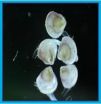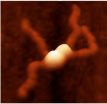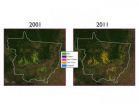(Press-News.org) BOSTON – As elite soldiers of the body's immune response, B cells serve as a vast standing army ready to recognize and destroy invading antigens, including infections and cancer cells. To do so, each new B cell comes equipped with its own highly specialized weapon, a unique antibody protein that selectively binds to specific parts of the antigen. The key to this specialization is the antigen-binding region that tailors each B cell to a particular antigen, determining whether B cells survive boot camp and are selected for maturation and survival, or wash out and die.
Now, using high-throughput sequencing technology and computational and systems biology, investigators from Beth Israel Deaconess Medical Center (BIDMC) have discovered that B cells can be selected for survival independent of their antigen binding regions. Described online this week in the journal Proceedings of the National Academy of Sciences (PNAS), the findings add a surprising new dimension to the understanding of antibody repertoires – each individual's complement of millions of B cells -- and the potential for shaping these repertoires to better fight disease.
"B cells play essential roles in vaccination, infection, autoimmunity, aging and cancer," explains senior author Ramy Arnaout, MD, DPhil, an investigator in the Department of Pathology at BIDMC and Assistant Professor of Pathology at Harvard Medical School whose work focuses on the emerging field of high-throughput multimodality immunology, also known as immunomics. "We were surprised and excited to find that B cell survival could be influenced by a non-antigen-binding region of the antibody, specifically the 'elbow' region that connects the antigen-binding regions to the signaling domain."
Each new B cell makes its own unique antibody by mixing and matching from a set of a few hundred genes, taking one each from subsets called V, D and J. The most diverse part of an antibody is the region where the three genes come together, a stretch called the third complementarity-determining region, or CDR3.
"CDR3 is thought to be the single most important determinant of antigen binding," explains Arnaout. As a result, in understanding how the body fights infections and in developing new vaccines, immunologists have primarily focused their attention on CDR3, while considering other parts of the antibody, including the elbow region, to play secondary roles.
In their new study, Arnaout and colleagues sequenced 2.8 million VDJ-recombined heavy-chain genes from immature and mature B-cell subsets in mice. "We initially wanted to ask how selection on CDR3 changed antibody repertoires during B-cell maturation," says Arnaout. But, unexpectedly, during the course of the investigation, they found they were instead focused on the antibody's 'elbow' region."
They found that B cells for which antibodies use V genes that encode 'looser' elbows were more likely to mature, regardless of their CDR3 sequence. This effect was both distinct from, and larger than previously described maturation-associated changes in CDR3 in the mice. Furthermore, it had a unique source: Differences in the V genes were hard-coded into the genome, as opposed to the mixed-and-matched combination of V, D and J genes that typically differs from B cell to B cell.
"This discovery was a little like going to watch a concert pianist perform and being mesmerized by her fingers only to realize that music was also coming from her elbows," says Arnaout. "It was something of a shock."
One explanation for how this "loose elbow" promotes survival relates to the bending process of the antibody. "B-cell selection and maturation depend on signaling," he explains. "Antigen binding is the signal, but for it to get to the cell it has to go through the elbow. It, therefore, makes sense that previous experiments have found that disrupting the elbow abolishes signaling without affecting antigen binding. We think a loose elbow might affect how the cell perceives binding, which then determines whether the B-cell soldiers are able to divide and form an elite antigen-fighting platoon, or turn in their weapons and retreat."
Ultimately, the authors write, "This discovery adds a surprising new dimension to the understanding of antibody repertoires and might one day help us shape them ourselves."
INFORMATION:
Coauthors include BIDMC investigators Joseph Kaplinsky (first author) and Anthony Li and New York University Medical Center investigators Amy Sun, Maryaline Coffre and Sergei B. Koralov (co-senior author.) Coffre and Koralov were supported by a grant from the Beckman Foundation.
Beth Israel Deaconess Medical Center is a patient care, teaching and research affiliate of Harvard Medical School, and currently ranks third in National Institutes of Health funding among independent hospitals nationwide.
The BIDMC health care team includes Beth Israel Deaconess Hospital-Milton, Beth Israel Deaconess Hospital-Needham, Beth Israel Deaconess Hospital-Plymouth, Anna Jaques Hospital, Cambridge Health Alliance, Lawrence General Hospital, Signature Health Care, Commonwealth Hematology-Oncology, Beth Israel Deaconess HealthCare, Community Care Alliance, and Atrius Health. BIDMC is also clinically affiliated with the Joslin Diabetes Center and Hebrew Senior Life and is a research partner of Dana-Farber/Harvard Cancer Center. BIDMC is the official hospital of the Boston Red Sox. For more information, visit http://www.bidmc.org.
Newly identified B-cell selection process adds to understanding of antibody diversity
Using high-throughput sequencing, investigators make surprising discovery about the immune system
2014-06-09
ELSE PRESS RELEASES FROM THIS DATE:
Faster, higher, stronger: A protein that enables powerful initial immune response
2014-06-09
Your first response to an infectious agent or antigen ordinarily takes about a week, and is relatively weak. However, if your immune system encounters that antigen a second time, the so-called memory response is rapid, powerful, and very effective.
Now, a team of researchers at The Wistar Institute offers evidence that a protein, called Foxp1, is a key component of these antibody responses. Manipulating this protein's activity, they say, could provide a useful pathway to boosting antibody responses to treat infectious diseases, for example, or suppressing them to treat ...
The Academy of Radiology Research featured in Nature Biotechnology journal
2014-06-09
The Academy of Radiology Research reported in the current issue of Nature Biotechnology (Volume 32, Issue 6) that patent output from the National Institutes of Health (NIH) is vital to understanding which various areas of science are contributing most to America's innovation economy. The report, "Patents as Proxies: NIH Hubs of Innovation," confirms an increased economic value of NIH patents as compared to private sector patents, as well as meaningful differences in the rate and quality of invention across different research and development (R&D) investments.
"The Academy ...
NOAA scientists find mosquito control pesticide low risk to juvenile oysters, hard clams
2014-06-09
Four of the most common mosquito pesticides used along the east and Gulf coasts show little risk to juvenile hard clams and oysters, according to a NOAA study.
However, the study, published in the on-line journal Archives of Environmental Contamination and Toxicology, also determined that lower oxygen levels in the water, known as hypoxia, and increased acidification actually increased how toxic some of the pesticides were. Such climate variables should be considered when using these pesticides in the coastal zone, the study concluded.
"What we found is that larval oysters ...
Antiviral therapy may prevent liver cancer in hepatitis B patients
2014-06-09
DETROIT – Researchers have found that antiviral therapy may be successful in preventing hepatitis B virus from developing into the most common form of liver cancer, hepatocellular carcinoma (HCC).
That was the finding of a study published in the May issue of Clinical Gastroenterology and Hepatology. Investigators from Henry Ford Health System in Detroit, Geisinger Health System in Danville, Pa., and Kaiser Permanente in Honolulu, Hawaii and Portland, Ore. participated in the study, along with investigators from the Centers for Disease Control and Prevention in Atlanta. ...
How much fertilizer is too much for the climate?
2014-06-09
EAST LANSING, Mich. — Helping farmers around the globe apply more-precise amounts of nitrogen-based fertilizer can help combat climate change.
In a new study published in this week's Proceedings of the National Academy of Sciences, Michigan State University researchers provide an improved prediction of nitrogen fertilizer's contribution to greenhouse gas emissions from agricultural fields.
The study uses data from around the world to show that emissions of nitrous oxide, a greenhouse gas produced in the soil following nitrogen addition, rise faster than previously expected ...
Coral, human cells linked in death
2014-06-09
SAN DIEGO (June 6, 2014) — Humans and corals are about as different from one another as living creatures get, but a new finding reveals that in one important way, they are more similar than anyone ever realized.
A biologist at San Diego State University has discovered they share the same biomechanical pathway responsible for triggering cellular self-destruction. That might sound scary, but killing off defective cells is essential to keeping an organism healthy.
The finding will help biologists advance their understanding of the early evolution of multicellular life, ...
Researchers recast addiction as a manageable disease
2014-06-09
Neuroscientists agree that abuse of drugs hijacks circuits in the brain that are crucial for decision-making, but society as a whole tends to stigmatize addicted people for lacking self-control. Slowly but steadily, scientists say, they are making important progress in changing the perception of addiction as they identify new therapeutic interventions that could render addiction into the equivalent of a manageable disease like diabetes.
A group of addiction researchers, for one, recently recommended to the Commission on Narcotic Drugs, part of the United Nations Office ...
Protein could put antibiotic-resistant bugs in handcuffs
2014-06-09
DURHAM, N.C. -- Staph infections that become resistant to multiple antibiotics don't happen because the bacteria themselves adapt to the drugs, but because of a kind of genetic parasite they carry called a plasmid that helps its host survive the antibiotics.
Plasmids are rings of bare DNA containing a handful of genes that are essentially freeloaders, borrowing most of what they need to live from their bacterial host. The plasmids copy themselves and go along for the ride when the bacteria divide to copy themselves.
A team from Duke and the University of Sydney in ...
Parent and child must get enough sleep to protect against child obesity
2014-06-09
URBANA, Ill. – Is sleep one of your most important family values? A new University of Illinois study suggests that it should be, reporting that more parental sleep is related to more child sleep, which is related to decreased child obesity.
"Parents should make being well rested a family value and a priority. Sleep routines in a family affect all the members of the household, not just children; we know that parents won't get a good night's sleep unless and until their preschool children are sleeping," said Barbara H. Fiese, director of the U of I's Family Resiliency Center ...
Land quality and deforestation in Mato Grosso, Brazil
2014-06-09
PROVIDENCE, R.I. [Brown University] — The state of Mato Grosso is the epicenter of an agricultural revolution in Brazil. During the last 15 years, expansion of agriculture in the state has helped Brazil become one of the world's top producers of soy, corn, cotton, and other staple crops. Despite the increase in production, the rate at which Amazon forestland in the state was cleared to make room for new farmland slowed significantly in the second half of the last decade.
Much of the credit for slowing deforestation has been given to government policies and intervention, ...
LAST 30 PRESS RELEASES:
For teens, any cannabis use may have impact on emotional health, academic performance
School meals could unlock major gains for human and planetary health
Menopause hormone therapy does not appear to impact dementia risk
Signature patterns of brain activity may help predict recovery from traumatic brain injury
Dresden study uncovers new key mechanism in cancer cells
New species are now being discovered faster than ever before, study suggests
Cannabis-based products show limited short-term benefit for chronic pain, with increased risk of adverse effects
Cannabis products with more THC slightly reduce pain but cause more side effects
Clearing the brain of aging cells could aid epilepsy and reduce seizures
Brain injuries linked with potential risk of suicide, new study finds
New technique lights up where drugs go in the body, cell by cell
New study finds movement of fishing fleets can reveal shifts in marine ecosystems
Embargoed: New evidence points to potential treatment for vascular dementia
Study uncovers disrupted brain balance in alcohol dependence
Working in groups can help Republicans and Democrats agree on controversial content moderation online
Structural findings reveal how distinct GPCR ligands create different levels of activation
Anything-goes “anyons” may be at the root of surprising quantum experiments
UC review: Maximizing workplace opportunity for veterans
From generation to complex control: Metasurfaces make perfect vortex beams "within reach"
Thin-film lithium niobate-based detector: recent advances and perspectives
Exploring why some people may tend to persistently make bad choices
How cells balance their protein levels
Nirsevimab vs RSVpreF vaccine for RSV–related hospitalization in newborns
Effectiveness and impact of maternal RSV immunization and nirsevimab on medically attended RSV in US children
AI gives scientists a boost, but at the cost of too many mediocre papers
Next-generation vision model maps tree growth at sub-meter precision
Genes aren’t destiny for inherited blindness, study shows
MIT study: High-fat diets make liver cells more likely to become cancerous
Exposure to multiple fine particulate matter components and incident depression in the US Medicare population
Risk of burdensome health care spending over time in the US
[Press-News.org] Newly identified B-cell selection process adds to understanding of antibody diversityUsing high-throughput sequencing, investigators make surprising discovery about the immune system




